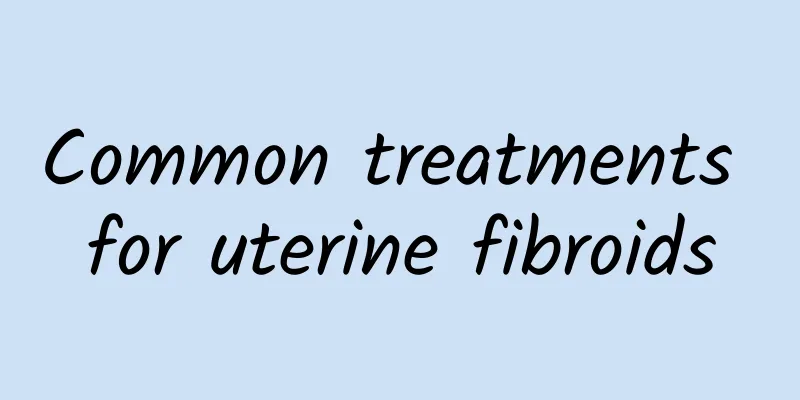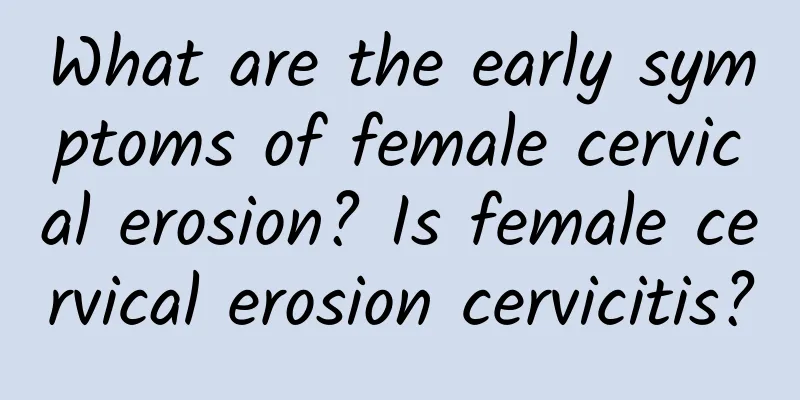Don't give ovarian cysts a chance!

|
Ovarian cysts are a type of ovarian tumor in a broad sense. They can occur at any age, but are most common in women aged 20-50. Ovarian tumors are common tumors of the female genitalia, with various properties and forms. Early diagnosis is difficult, and 70% of them are in the late stage when they are treated. Early treatment is rarely available, and the 5-year survival rate has always hovered at 20-30%. It is one of the most serious malignant tumors that threaten women's lives. Therefore, we must understand the symptoms of ovarian cysts so that we can effectively treat them. 1) Symptoms of ovarian cysts include lower abdominal distension and pain as the initial symptom before the patient feels a lower abdominal mass. Due to the weight of the tumor itself and the influence of intestinal peristalsis and body position changes, the tumor moves in the pelvic cavity, pulling on its pedicle and pelvic funnel ligament, causing the patient to feel distension and falling in the lower abdomen or iliac fossa. 2) Increased abdominal circumference and abdominal mass. This is the most common phenomenon in the main complaint. The patient finds that his clothes or belt seem tight and small, and then he notices that his abdomen is enlarged, or he feels it accidentally in the morning, so he presses his abdomen and finds that there is a mass in the abdomen, plus abdominal distension and discomfort, which is one of the symptoms of ovarian cysts. 3) Symptoms of ovarian cysts also include abdominal pain. If the tumor has no complications, there is little pain. Therefore, if patients with ovarian tumors feel abdominal pain, especially if it occurs suddenly, it is mostly due to the twisting of the tumor pedicle, or occasionally due to tumor rupture, bleeding or infection. In addition, malignant cysts often cause abdominal pain and leg pain, and the pain often causes patients to seek emergency treatment. 4) Menstrual disorders. Generally, ovarian cysts, even bilateral ovarian cysts, do not cause menstrual disorders because they do not destroy all normal ovarian tissues. Some uterine bleeding is not endocrine, or it is caused by ovarian tumors that change the distribution of pelvic blood vessels, causing endometrial congestion; or it is caused by ovarian malignant tumors that directly metastasize to the endometrium. Menstrual disorders caused by endocrine tumors are often combined with other secretory effects, which is one of the symptoms of ovarian cysts. Since the symptoms of early ovarian cysts are not very clear, and the incidence rate is becoming younger and younger, everyone should have regular gynecological examinations. Even for young girls, as long as they have had their first menstruation, it is best to have an abdominal B-ultrasound once a year, so that they can be discovered and resolved as early as possible. If you have any questions, you can consult our online experts. For more information, please visit the ovarian cyst disease special topic at http://www..com.cn/fuke/ncnn/ or consult an expert for free. The expert will then give a detailed answer based on the patient's specific situation. |
<<: Experts comprehensively analyze the dangers of vaginitis.
>>: How can middle-aged women prevent uterine fibroids?
Recommend
What's wrong with my menstrual cycle being only 18 days this month?
What's wrong with my menstrual cycle being on...
How long after an abortion can you exercise? You need to pay attention to these matters when exercising after an abortion
Many female friends are not very clear about the ...
The difference between menstrual bleeding and ectopic pregnancy bleeding
What is the difference between menstrual bleeding...
What to do if women have itching in their lower body
Nowadays, many women suffer from various gynecolo...
Why do women have long-term dysmenorrhea?
Normal07.8磅02falsefalsefalseMicrosoftInternetExplo...
How to treat uterine fibroids
How to treat uterine fibroids? Uterine fibroids a...
Anti-aging starts with anti-oxidation and anti-inflammation! Nutritionist Huang Xiaotong: 5 must-eat foods with turmeric to fight inflammation
Aging is related to oxidation and inflammation of...
Is fat a murder weapon? Study: Obesity harms five organs most
"Being able to eat is a blessing", &quo...
Symptoms of uterine fibroids in women can cause abdominal masses
In life, there are always women who suffer from u...
One rice dumpling contains over 600 calories! It takes 20 dragon boat trips to exhaust the
During the Dragon Boat Festival, everyone eats ri...
What you need to know about postoperative conditioning for uterine fibroids
Surgery is one of the treatment methods for uteri...
Multiple artificial abortions are the main cause of cervical erosion
Cervical erosion is a relatively common gynecolog...
Will constipation cause adnexitis?
We know that adnexitis is a very troublesome dise...
Several reasons can lead to the occurrence of pelvic peritonitis
Pelvic peritonitis is a common gynecological dise...
Is your weight off in winter? ! A cup of guava for breakfast can cleanse the intestines and improve your skin
If you want to maintain your skin's moisture ...









